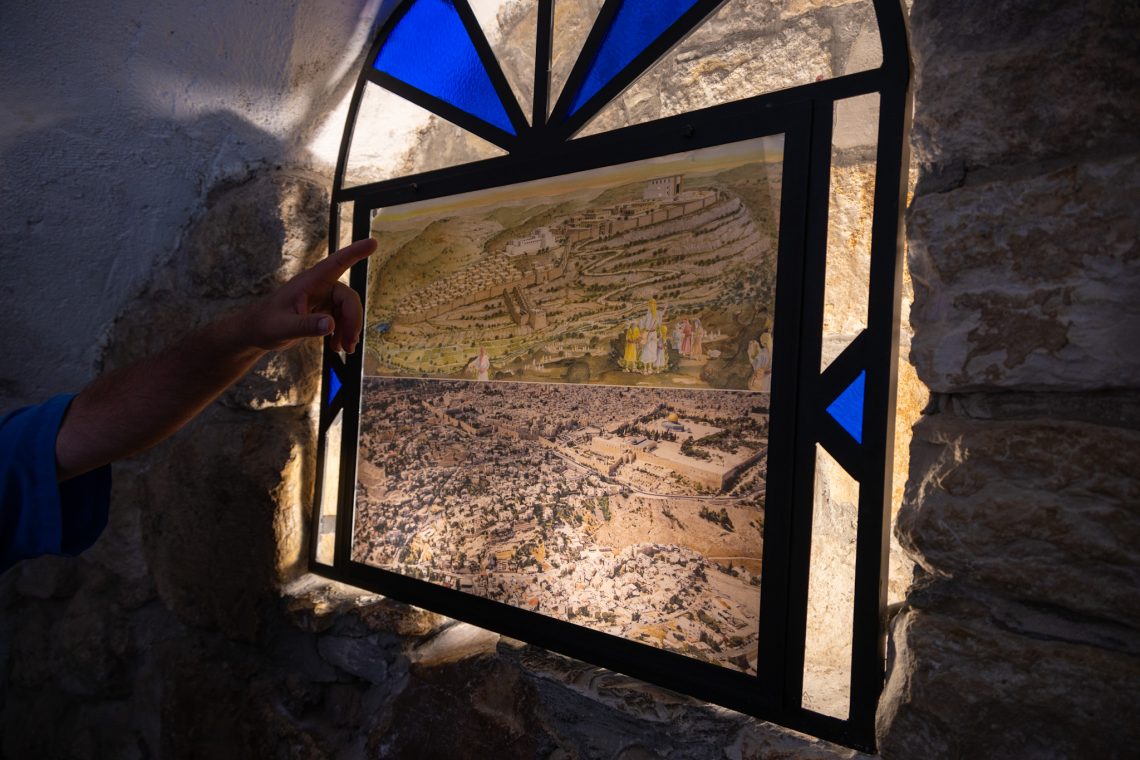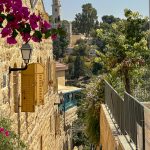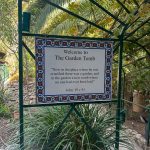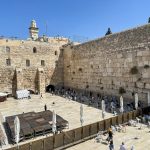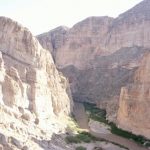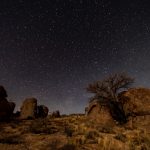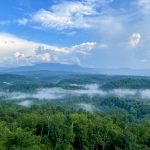The featured image above is a comparison of Jerusalem in Solomon’s era versus today. We viewed this at the City of David as we were heading down into the tunnels.
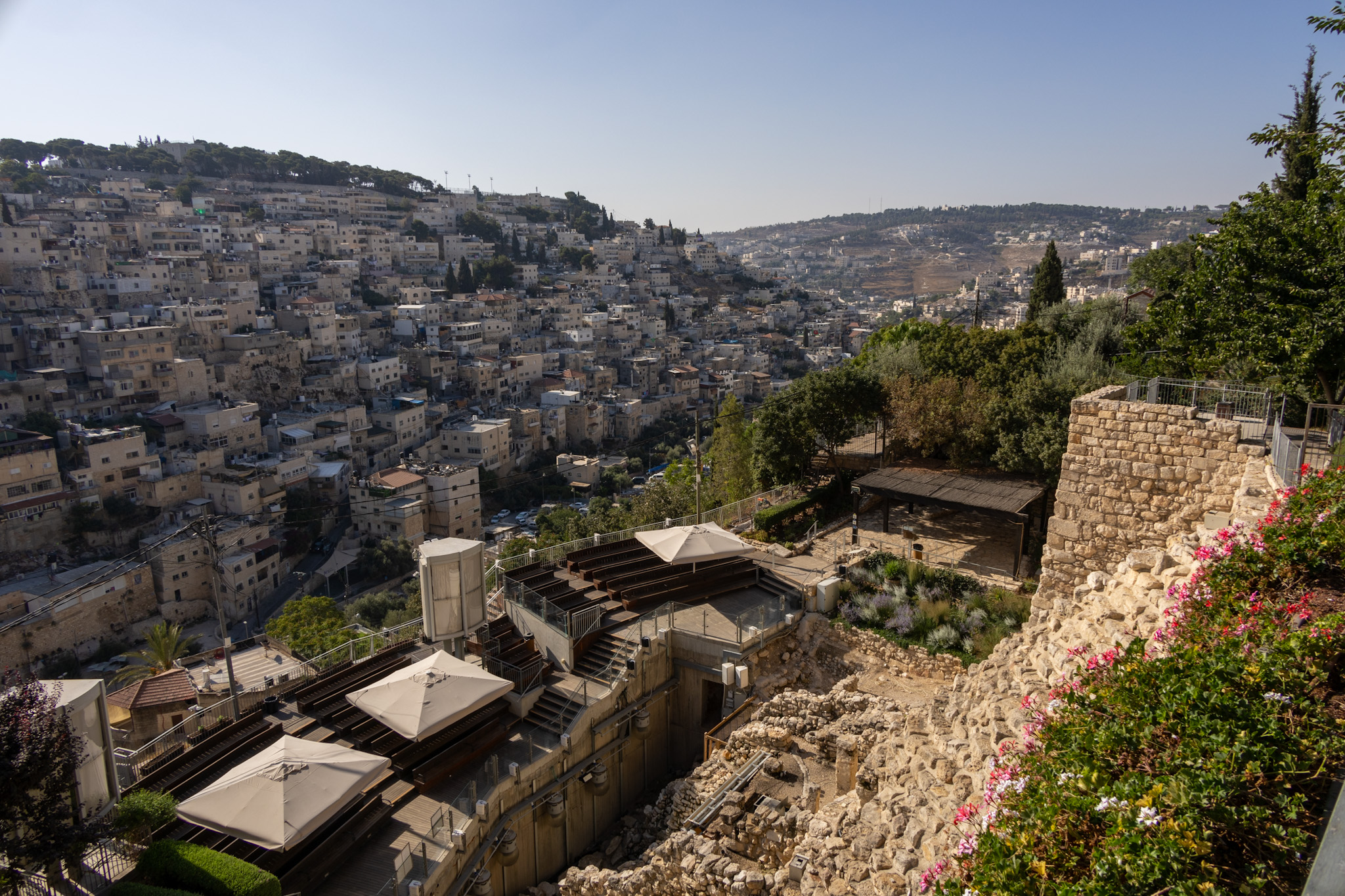
View of Jerusalem from The City of David. The location for his city had two very important features: fresh water from the Gihon Spring and a defensive security position of being on this steep hillside.

Showing the current water level in Hezekiah’s tunnel. Some of our group will take the dry tunnel route and some will be wading through the wet tunnel. Which will we choose?
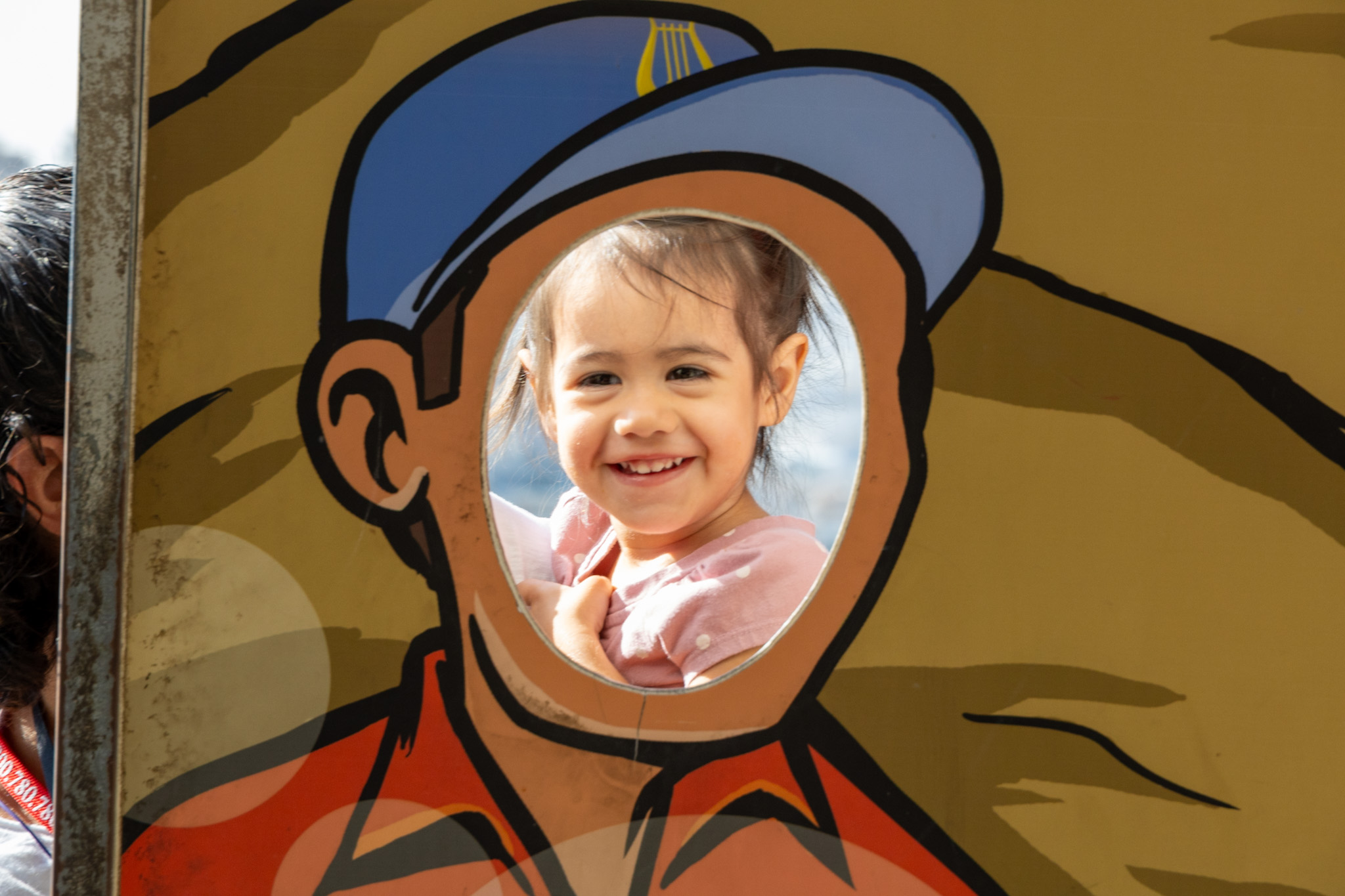
Cutie pie
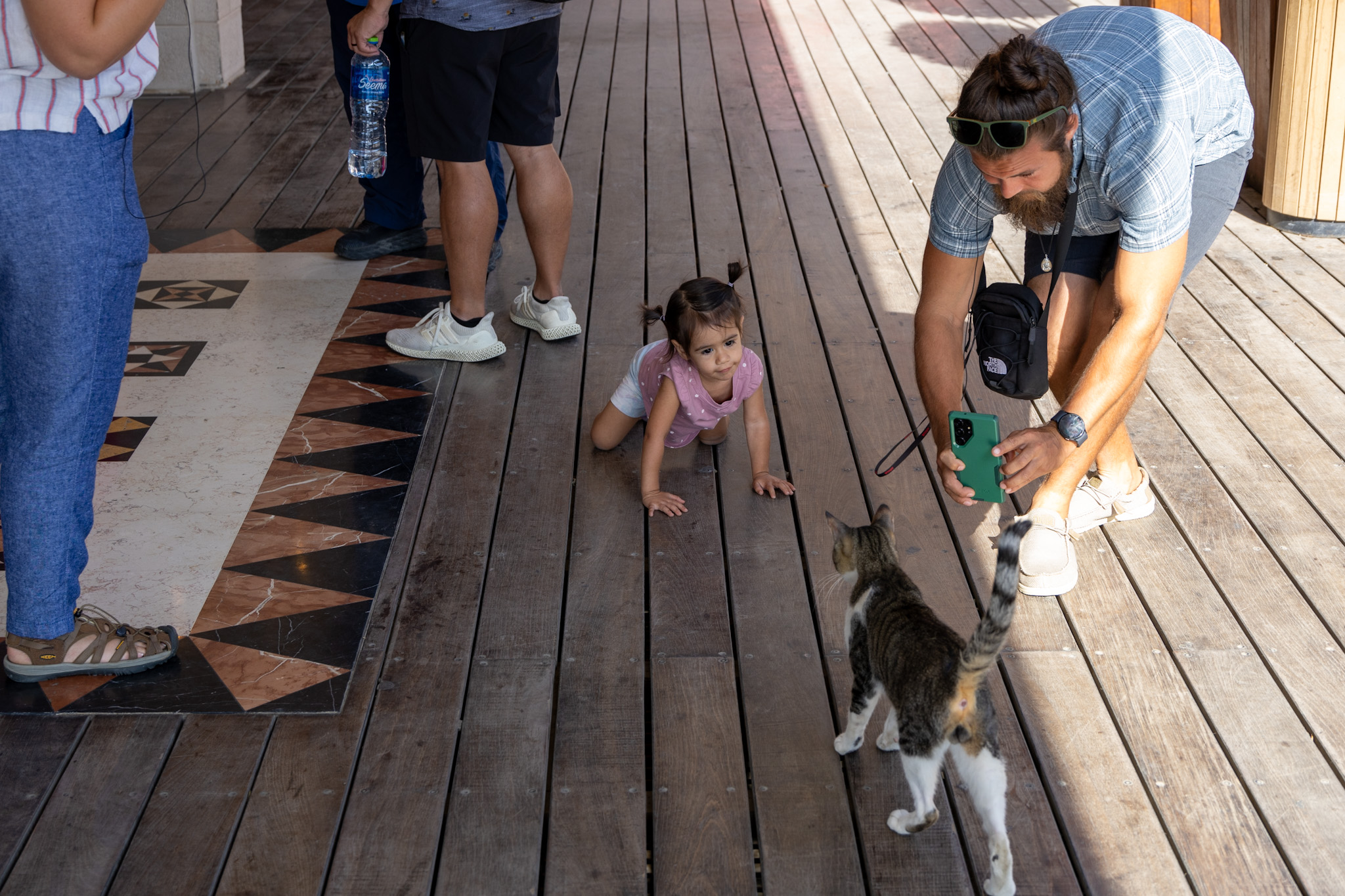
Junia befriending King David’s royal kitty

Did they have 3D films in King David’s day?
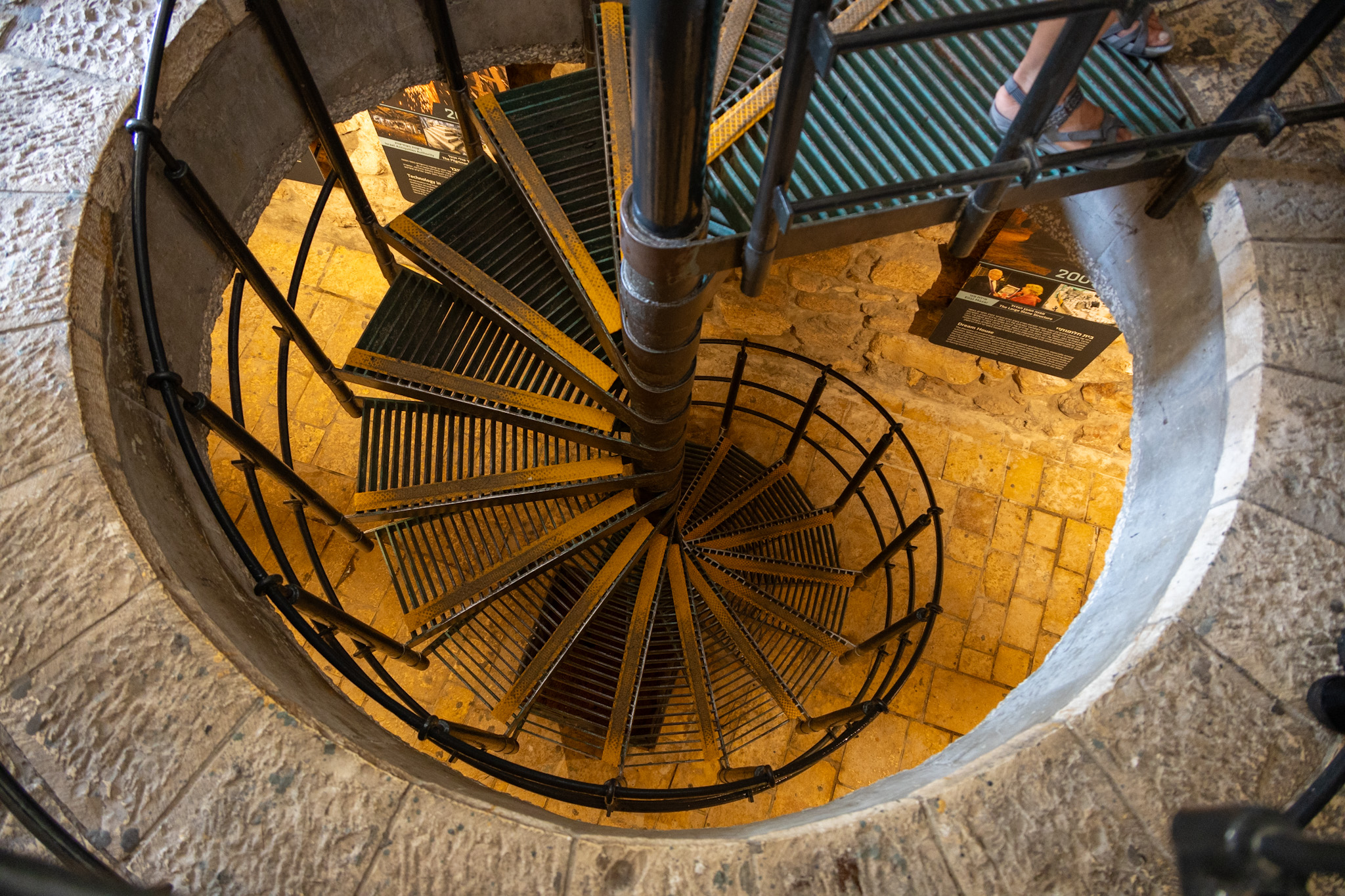
Down to the tunnels
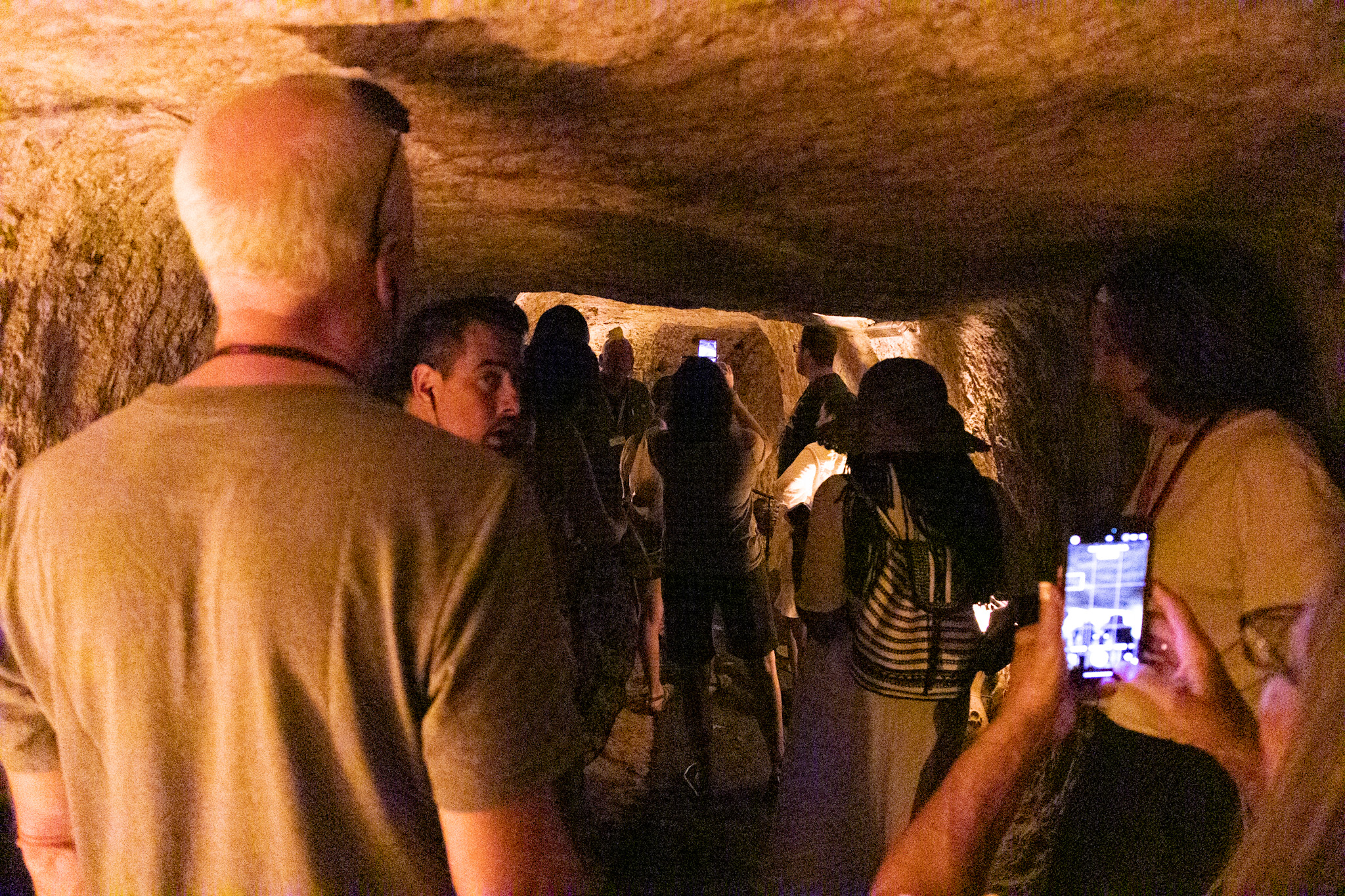
Our entire group entering the tunnels
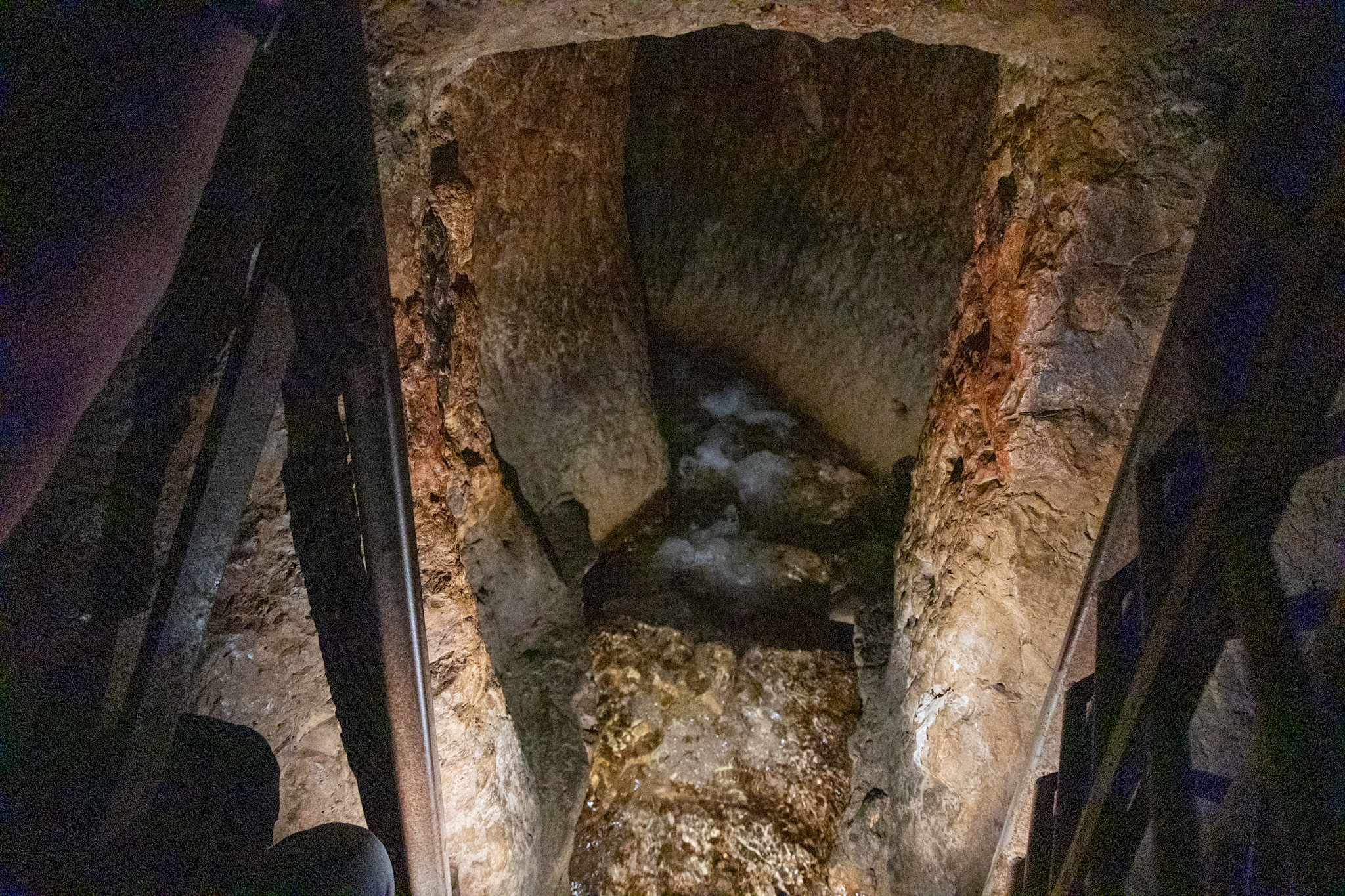
We did not join those who entered the water here to make their way through the water tunnel. It was completely dark so they had to use flashlights to find their way.

The rest of us chose the skinny, dry tunnels. The tunnels were built to keep fresh water inside the city walls and were the major water source for Jerusalem for over 1,000 years.

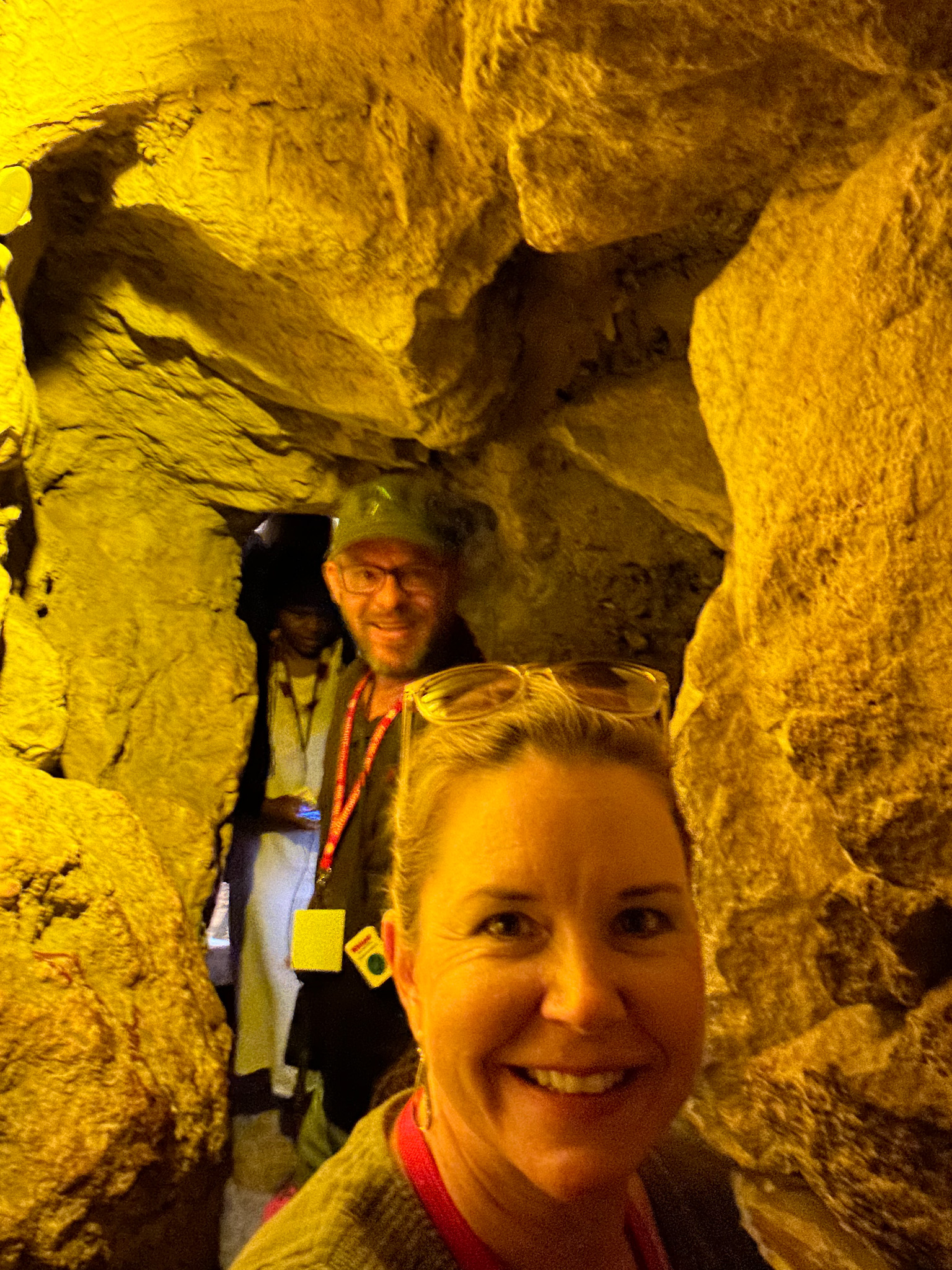
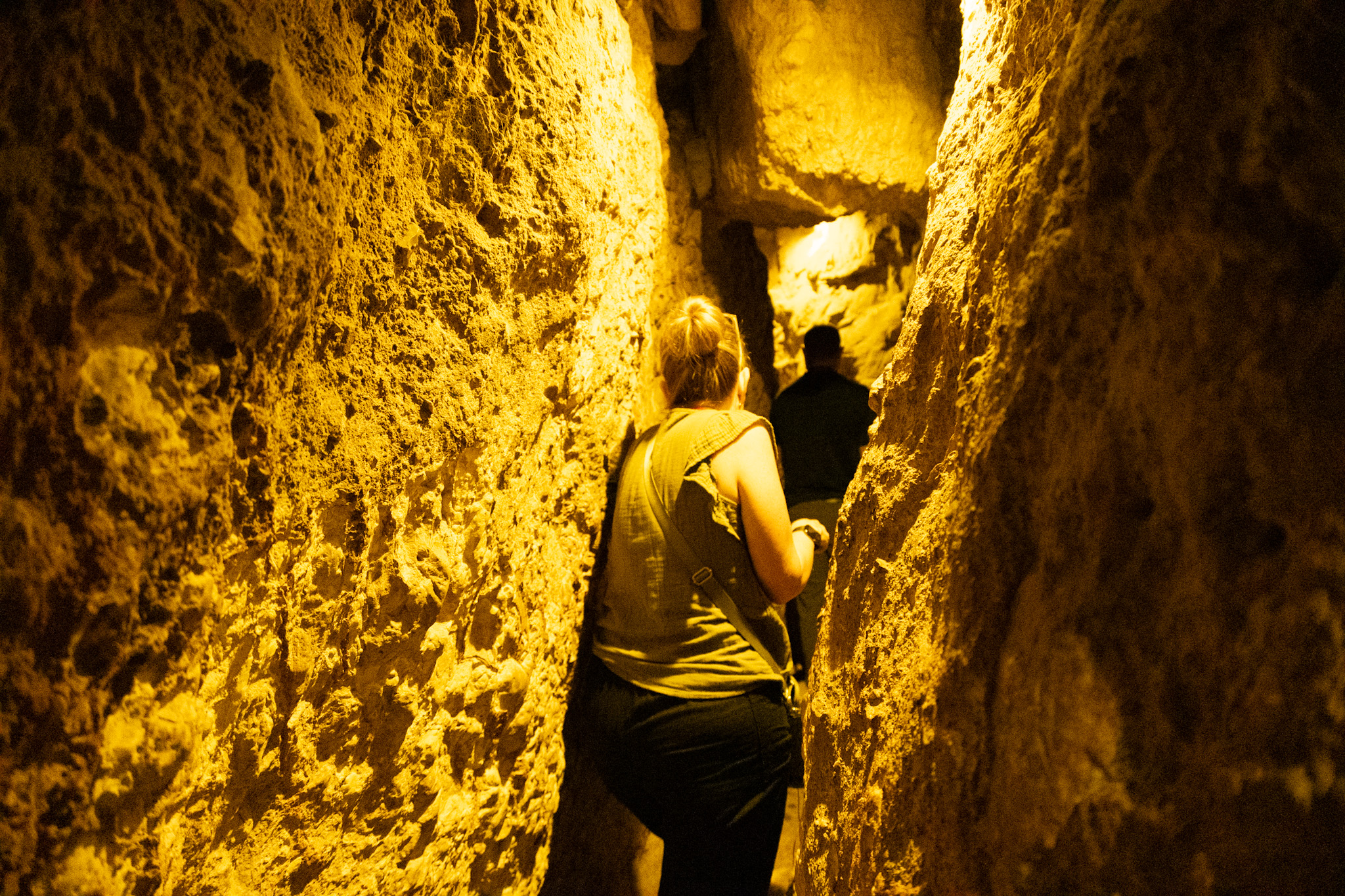

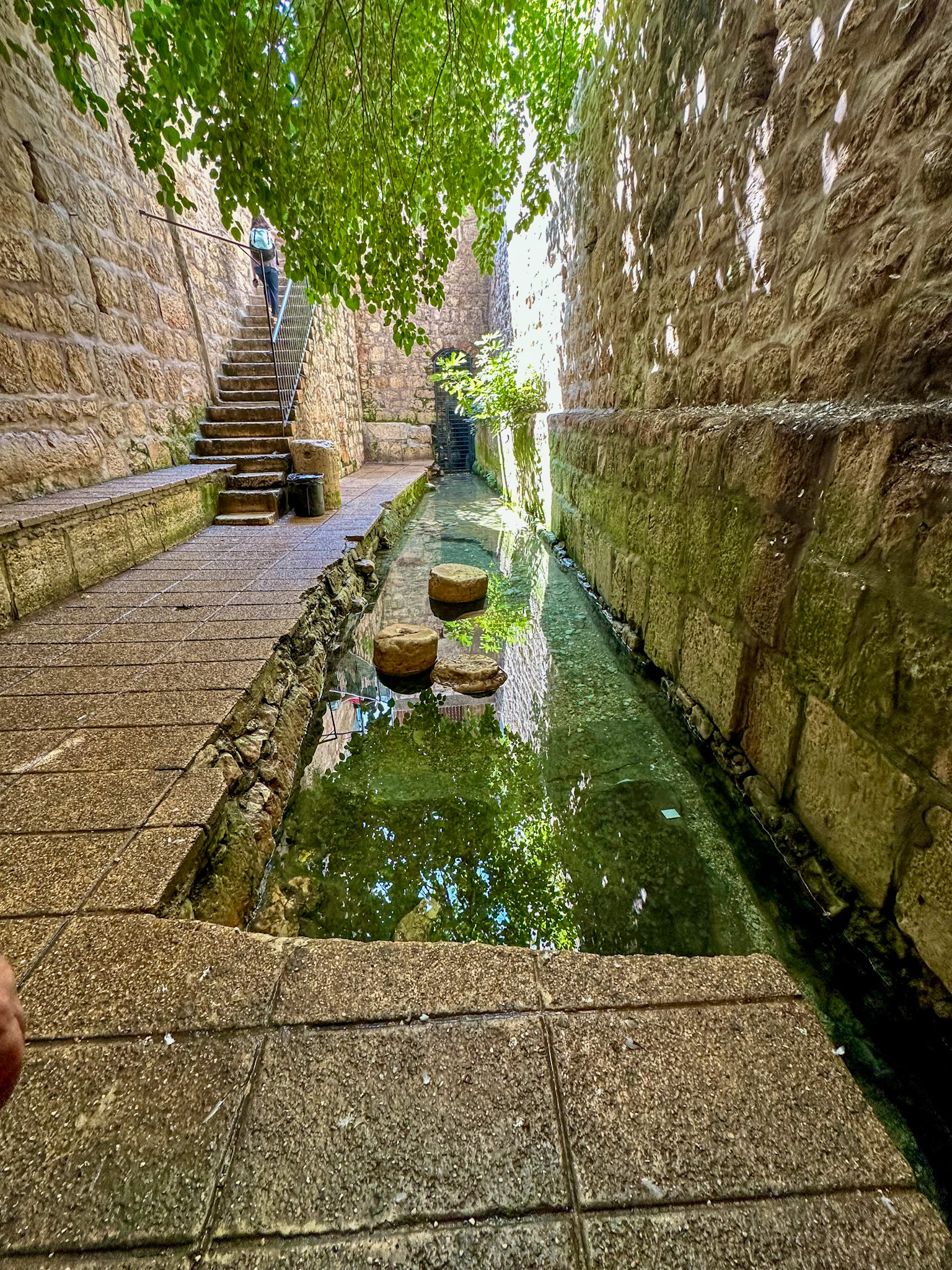
The pool outside the water tunnel. A beautiful little area where we awaited our more adventurous friends!
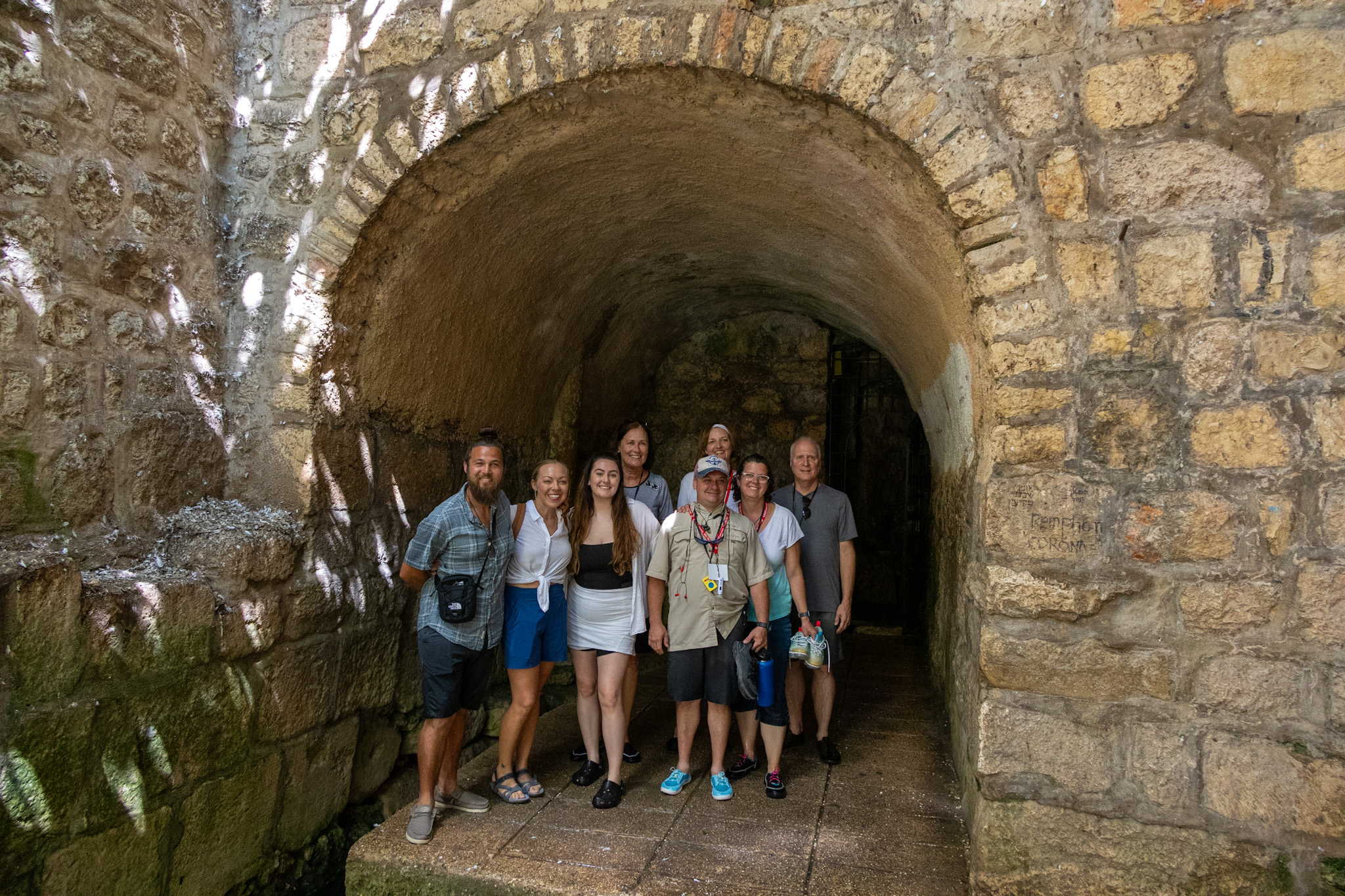
The adventurers

Really neat tree growing through the stone

Looking back up to where we’d been prior to tunneling at the top of the City of David

Pool of Siloam – discovered in 2004. “Then he spit on the ground, made mud with the saliva, and spread the mud over the blind man’s eyes. He told him “Go wash yourself in the pool of Siloam” So the man went and washed and came back seeing!” John 9:6-7
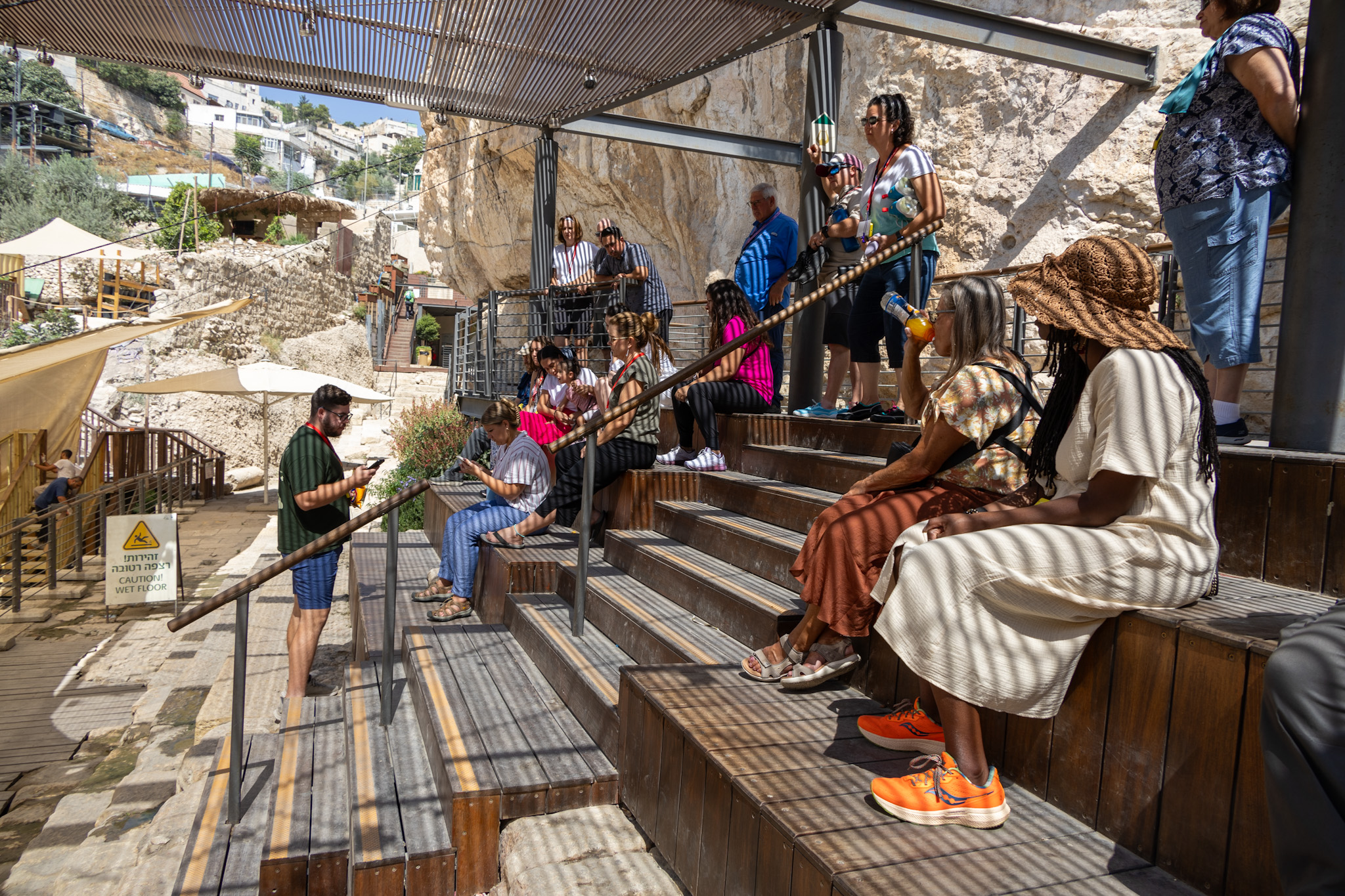
Pastor Cody read from John

We saw a Bar Mitzvah complete with tents and several shofars, immediately upon entering the Old City of Jerusalem. The celebration and excitement were precious to see. We’ll see their balloons floating up to the sky a little later.
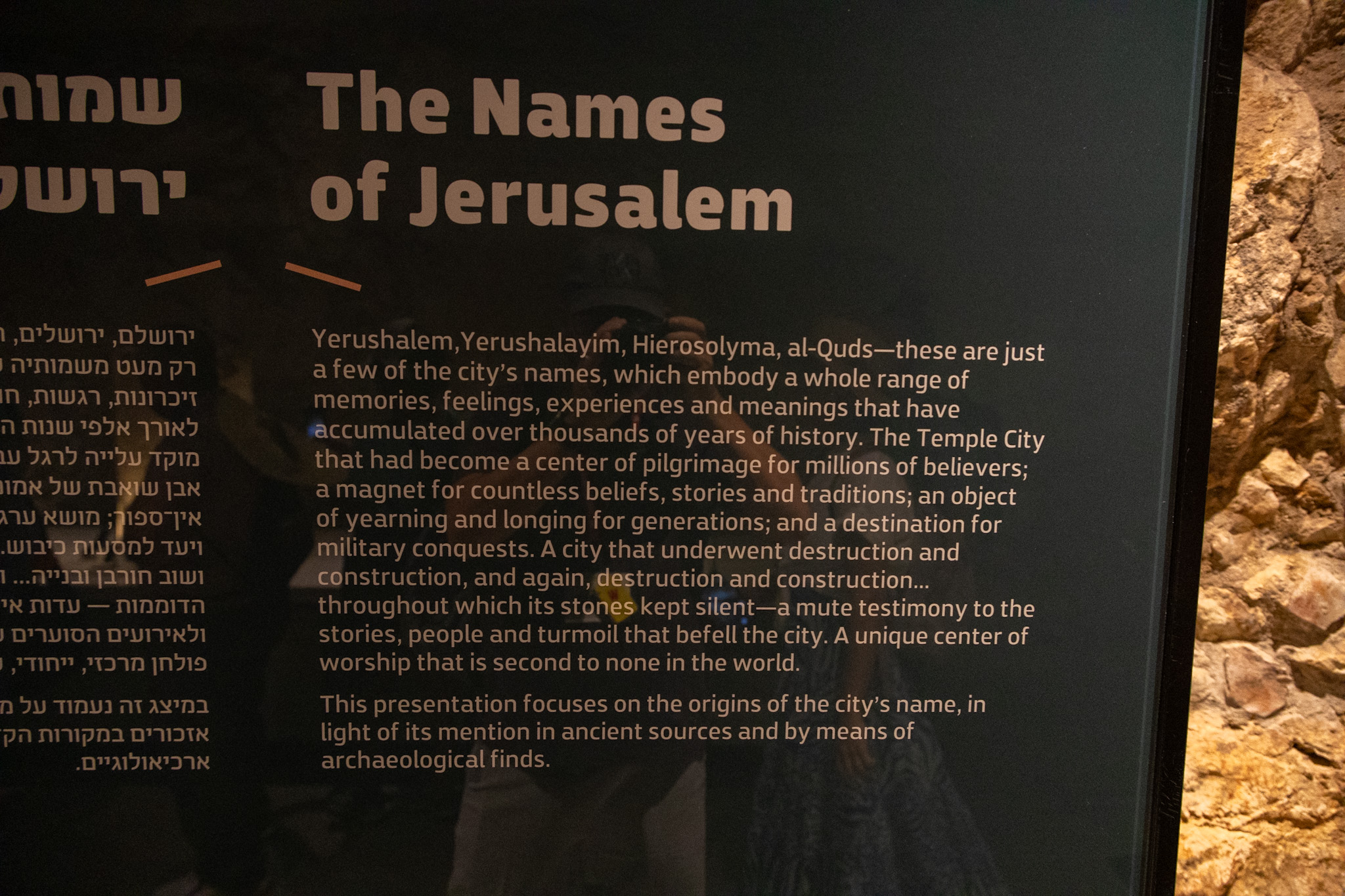

Southwestern corner of the wall at the Temple Mount, this is just south of the area where the Jews pray at the Western Wall.

Southern wall. These steps are the area where Jesus would have entered and exited the temple, where he would have taught and where Peter preached his first sermon. (Acts 2:36-41)
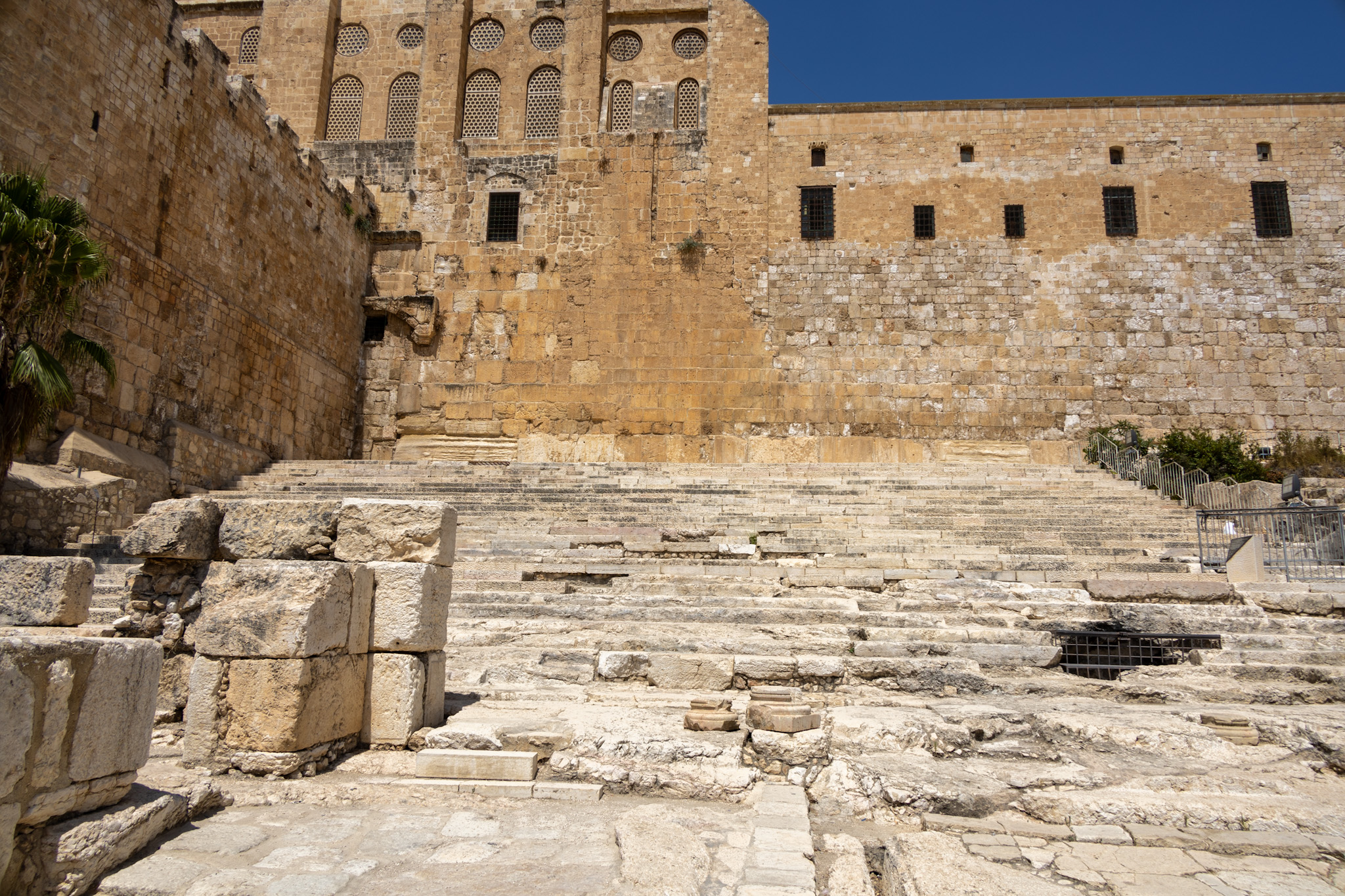

Southern wall. Note 3 sealed gates in the distance
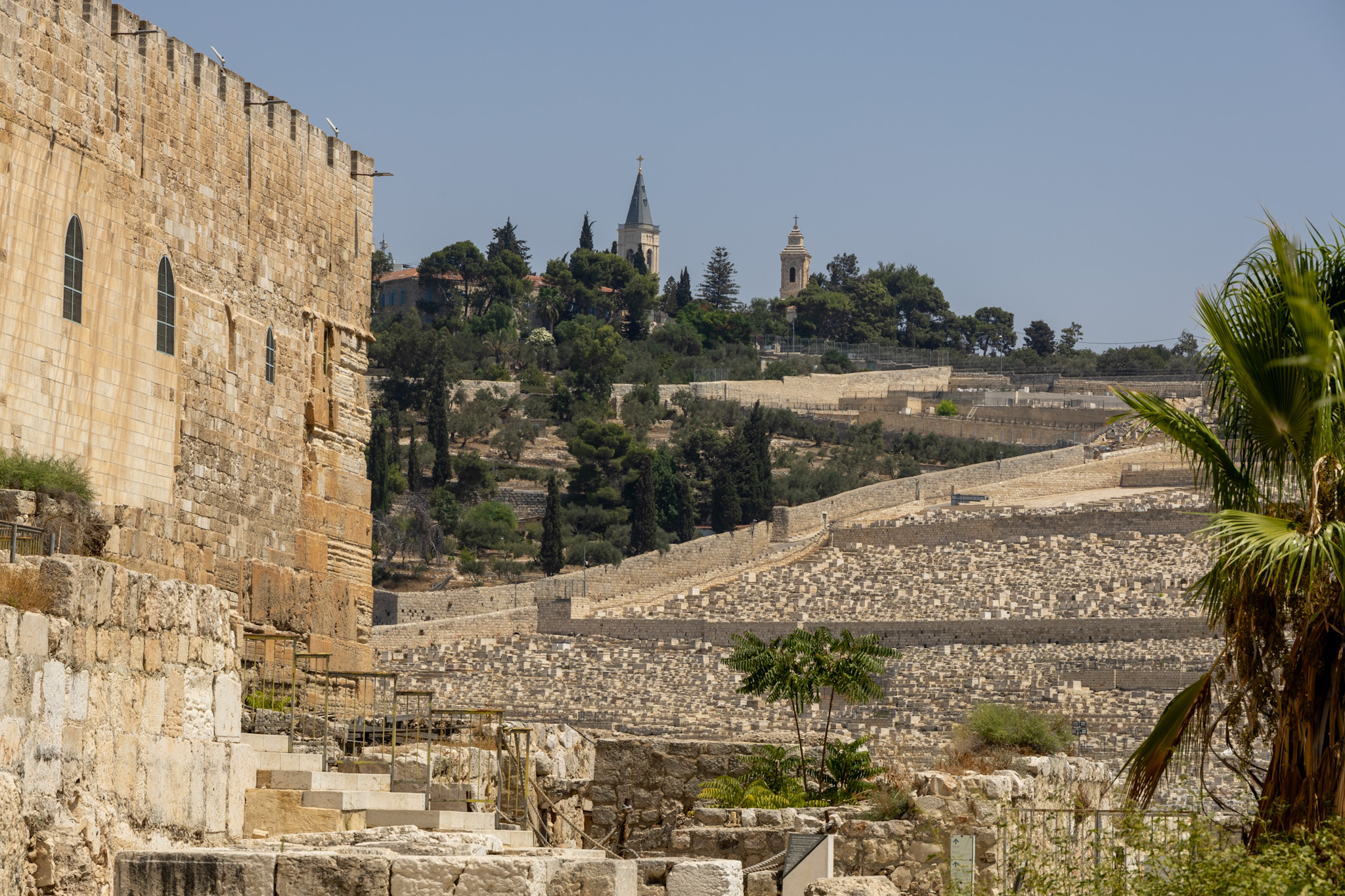

Bar Mitzvah balloons, including a cute #13
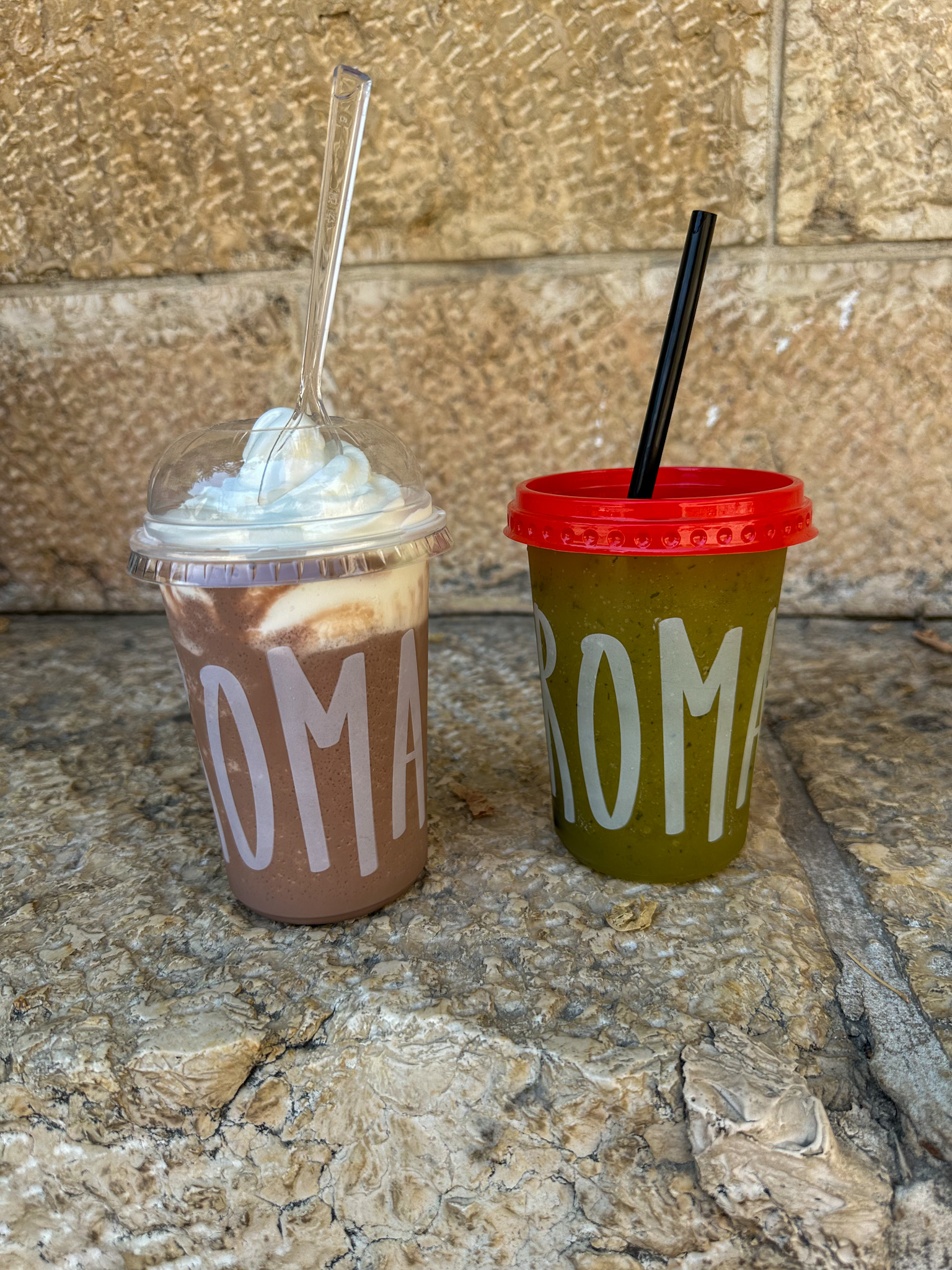
Finally found limonana (right) – frozen mint lemonade with fresh mint – this will be the first of many for Kristi!

Model of the 2nd temple and with retaining wall – built by Herod.

Inside the Western Wall tunnel



First church and start of the Via Dolorosa. The entire walk of Jesus is represented either by churches or numbered metal sculpture markers. There are 14 stations of the cross, as it is referred to. We will not include all stations or markers, just a sampling. This is the Chapel of Flagellation – Jesus was condemned to death in this area.
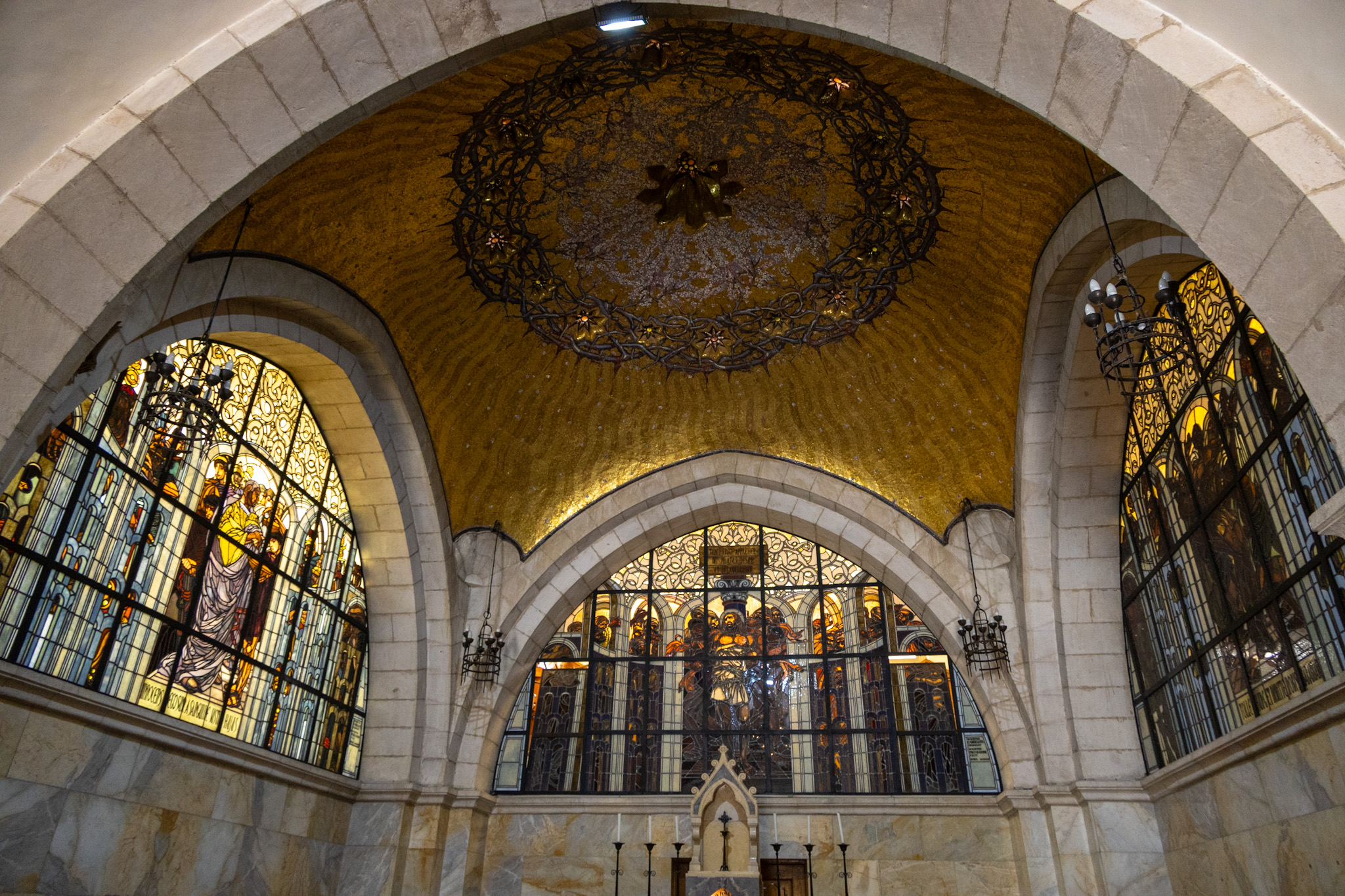
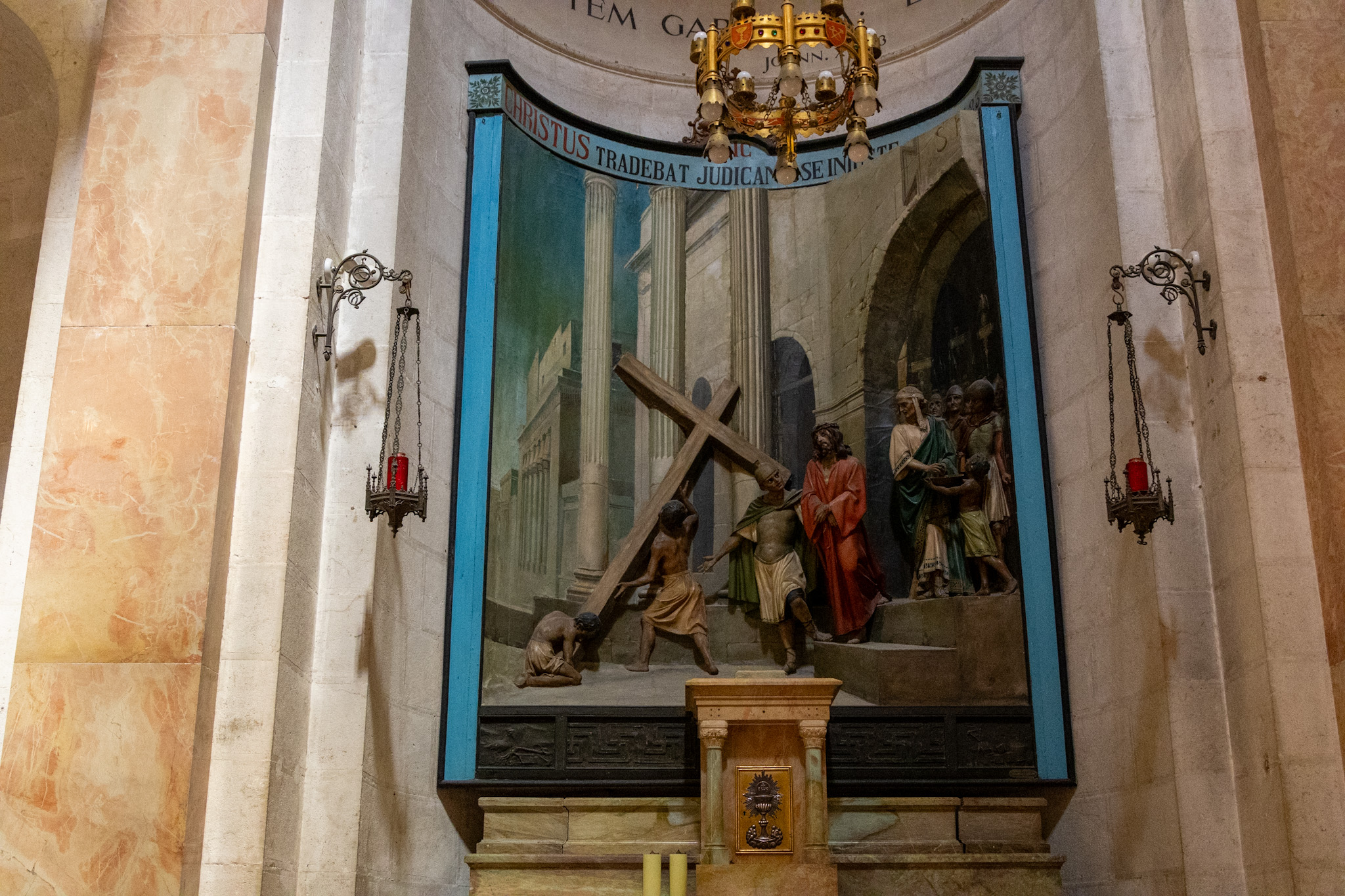

Making our way along the Via Dolorosa (Latin for Sorrowful Way or Way of Suffering). The entire route is 0.37 mile.


Vía Dolorosa kitties

The Pool of Bethesda is along the route in the northeast corner of the Old City in the Muslim Quarter. This is where Jesus healed the man who had been sick for 38 years! (John 5:1-18)

Church of St. Anne
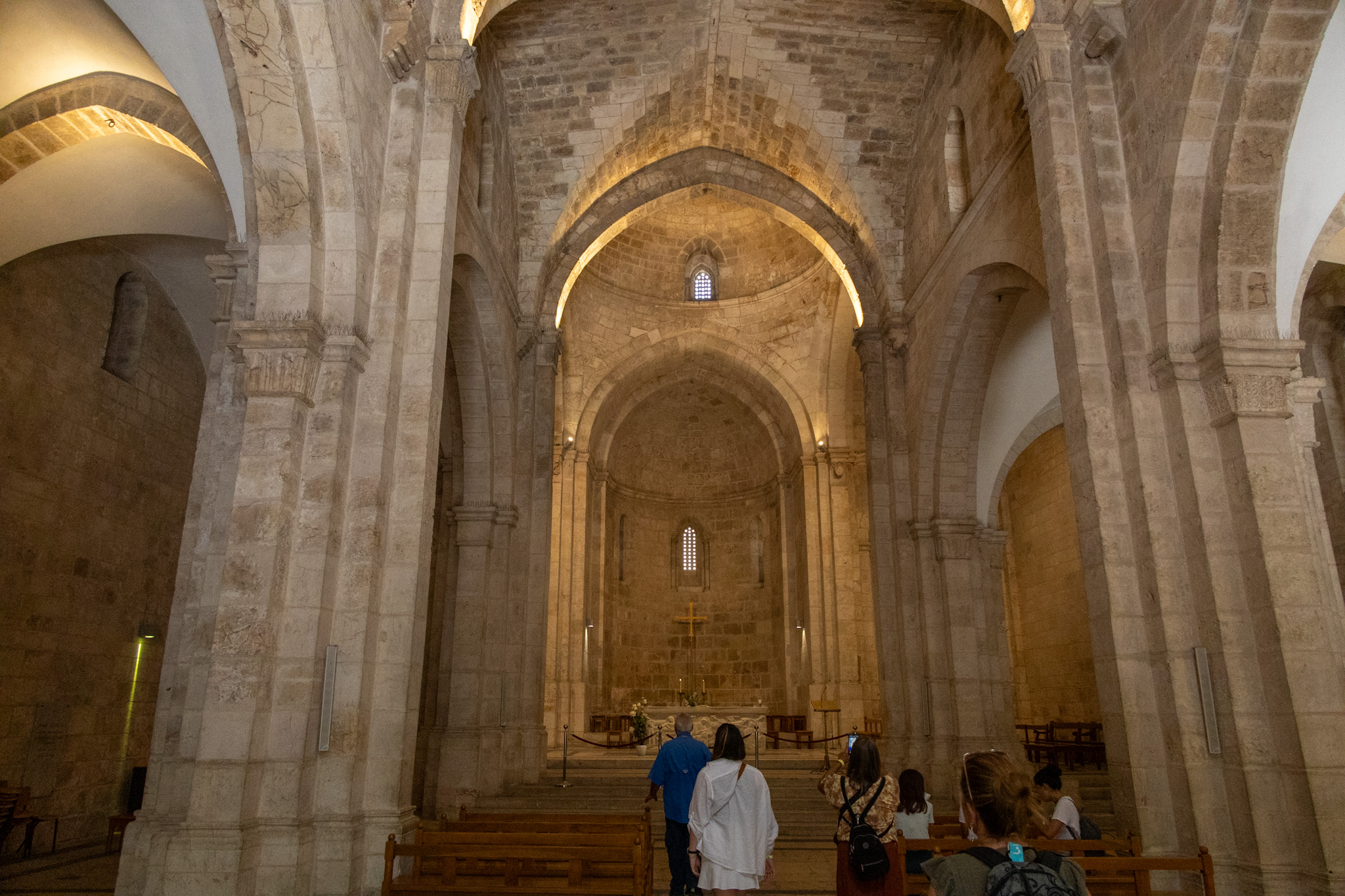
Holly leading the singing of “Yeshua” in the Church of St. Anne which has a 10 second echo.

A group of IDF. We did not see nearly as many as we had thought we would.

The many of the stations of the cross are marked with a metal plate with a Roman numerals. Each station also has a 3D icon which depicts the story of that station. These stations are not all in the New Testament as some are just catholic traditions. So this is station #3 and not mentioned in the NT, supposedly where Jesus fell for the first time.
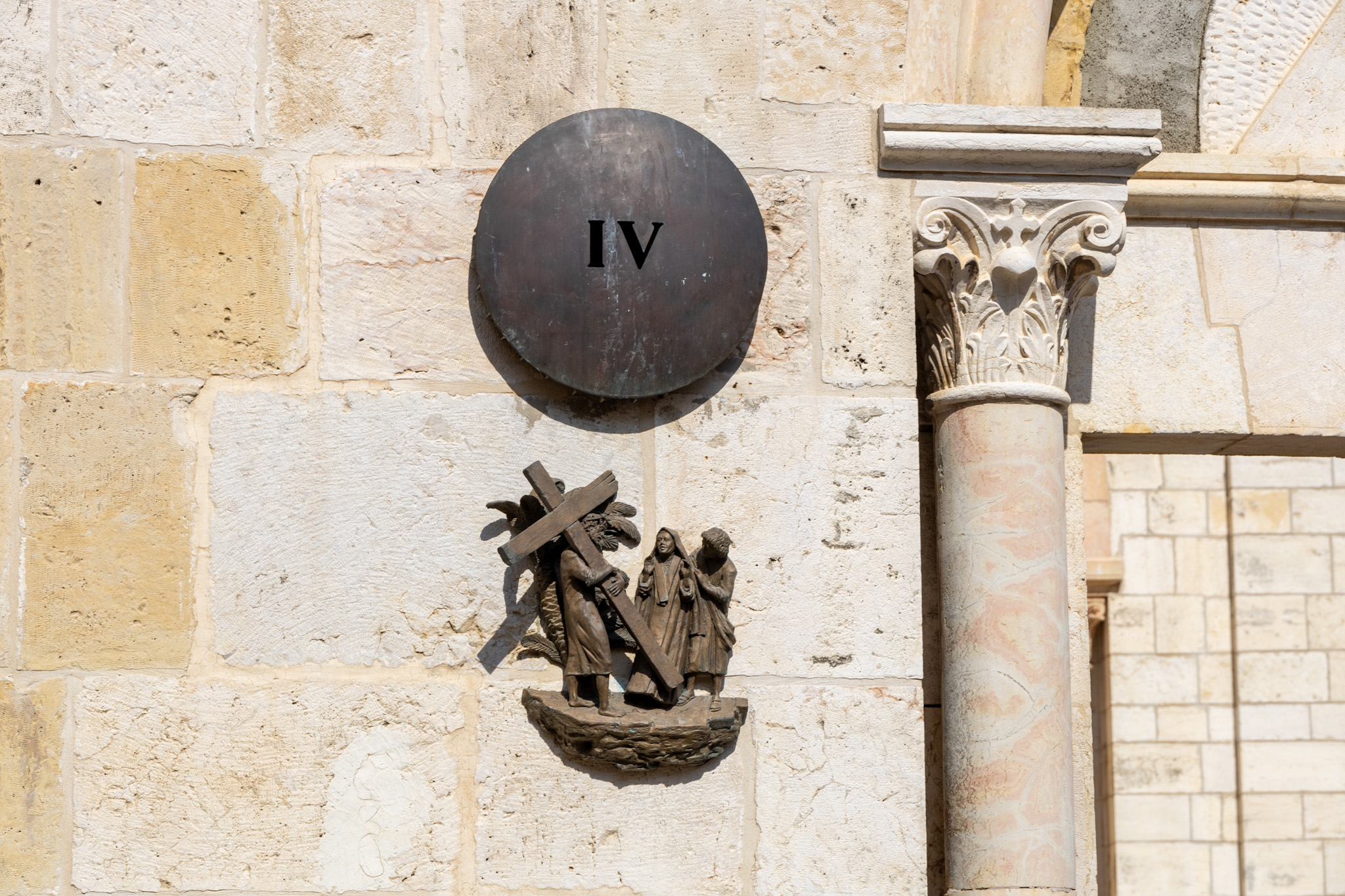
Station #4 not in the NT. This place is owned by Armenian Catholics and is the only place they own in the Holy Land. They say it is where Jesus met his mother and she saw him fall for the first time.

The Via Dolorosa leads right through the bazaar. (Bazaar = market in middle eastern or Asian country)

Station #5 – yay from the New Testament. This is where Simon of Cyrene helps Jesus carry the cross. “Along the way, they came across a man named Simon, who was from Cyrene, and the soldiers forced him to carry Jesus’ cross.” Matthew 27:32.

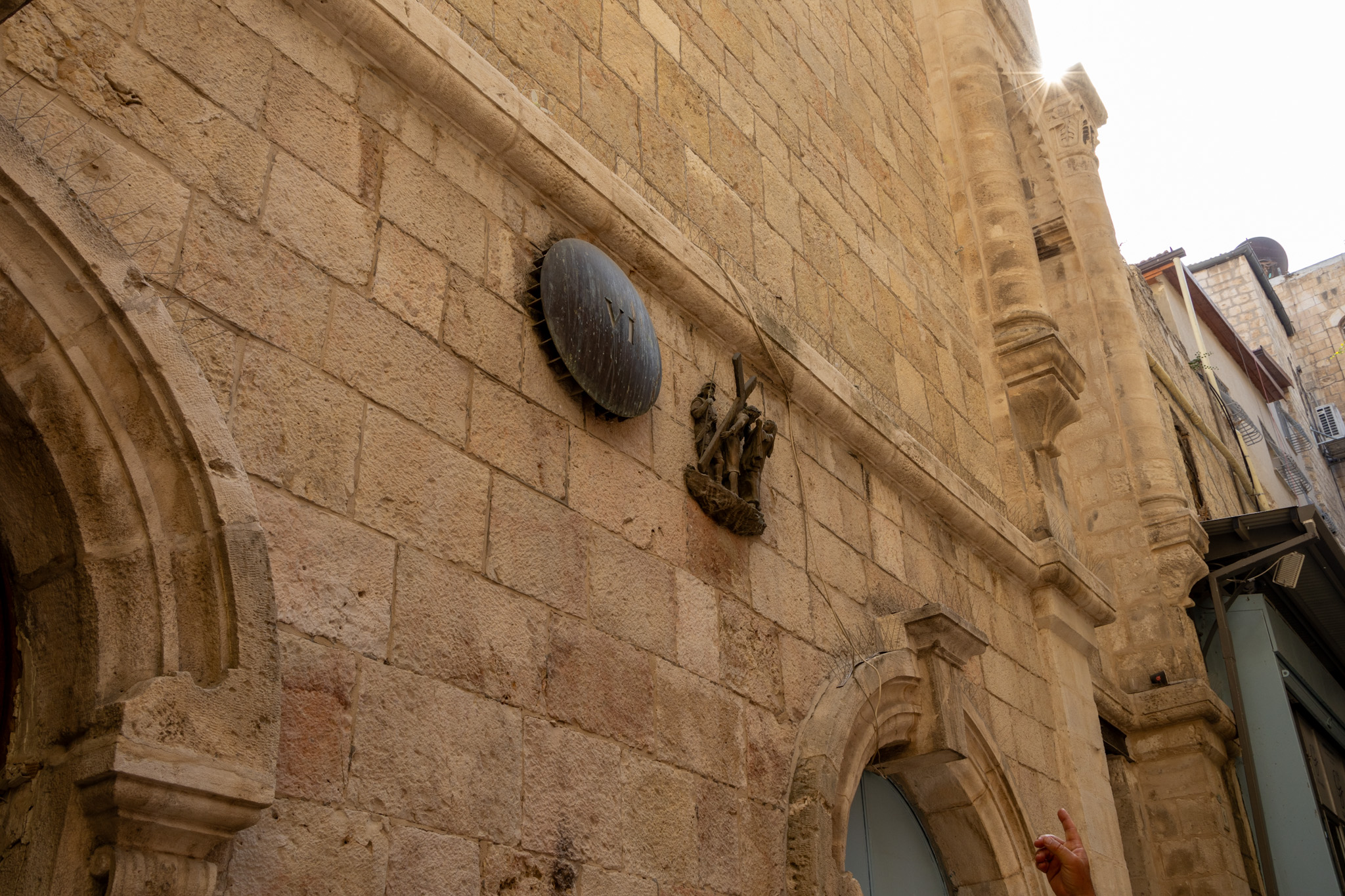
Station #6 – Veronica wipes the face of Jesus.
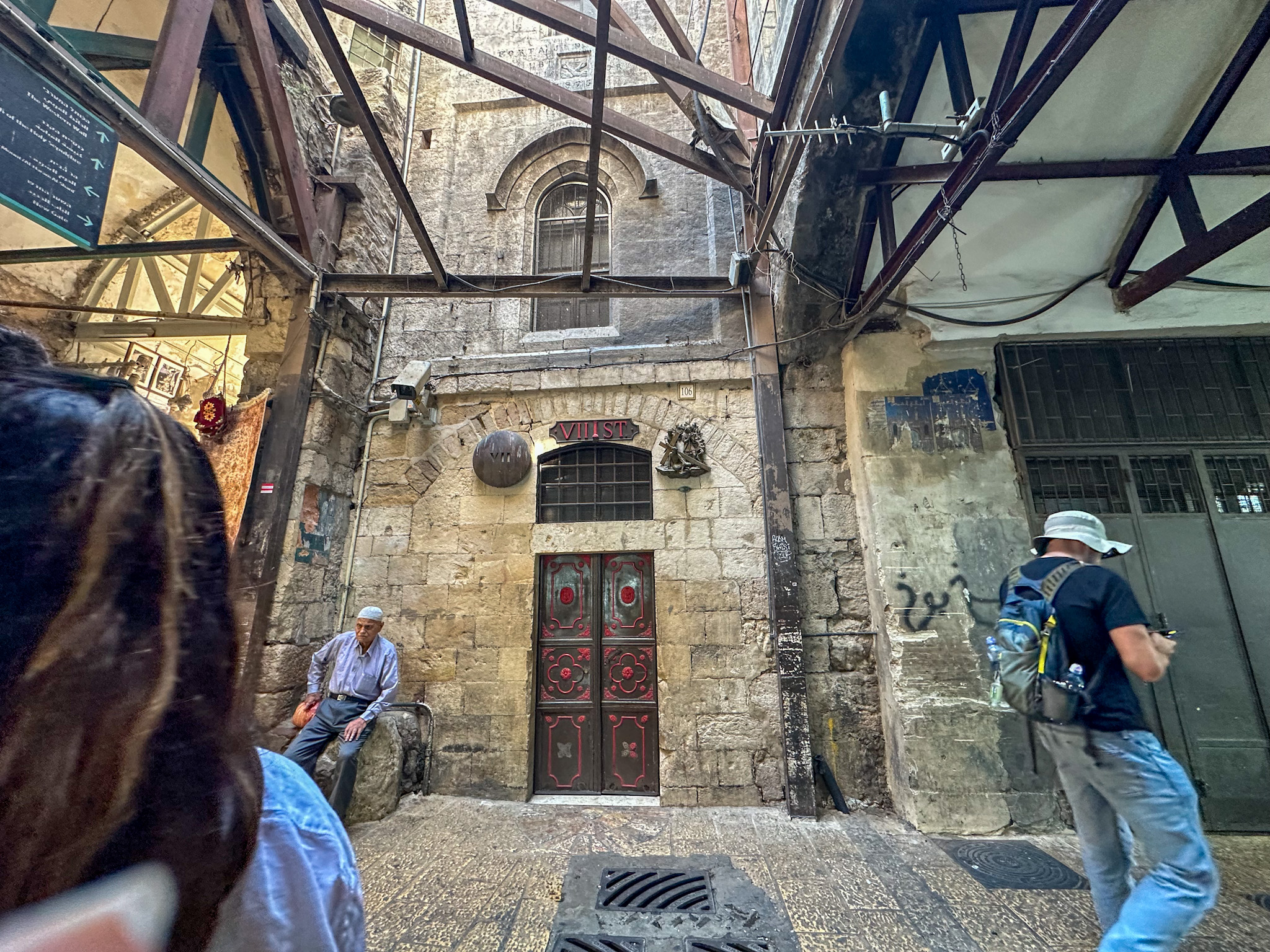
Station #7 – Jesus falls for the second time.
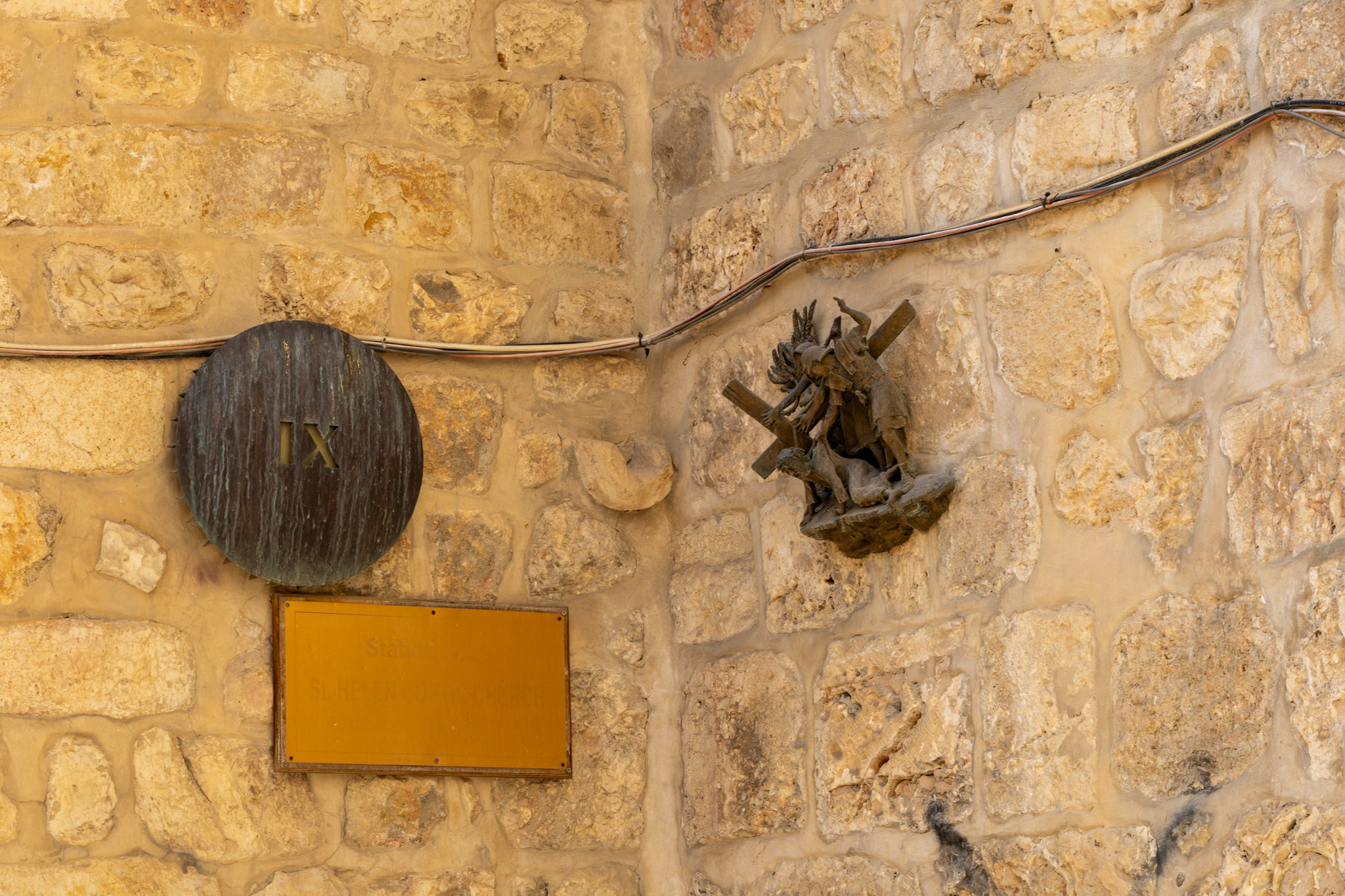
Station #9 – Jesus falls for the third time.



Via Dolorosa kitty (We’re going to name her Sandi because we can’t get Sandi Patty’s song about the Via Dolorosa out of our head)

More limonana in the market

The Church of the Holy Sepulchre is confusing and gaudy and generally disappointing. This is a possible place of Jesus’ death on the cross (Golgotha) and the place of his tomb. There are 7 churches here who fight for space and are built around and on top of each other. All of these churches cannot agree on who “manages” the area so, believe it or not, a Muslim family holds the keys to these churches and locks and unlocks this highly visited tourist area each day. For those of us who just want to be in the area where Jesus died for our sins on the cross – it is hard to feel anything meaningful when surrounded by quite possibly the most gaudy church we’ve ever laid eyes on. There is no way to sugarcoat this, it is just highly disappointing all the way around and we really can’t believe this is what Jesus would want in this place.

Once in the area of the Church of the Holy Sepulchre, we walked in and around to several churches and areas.

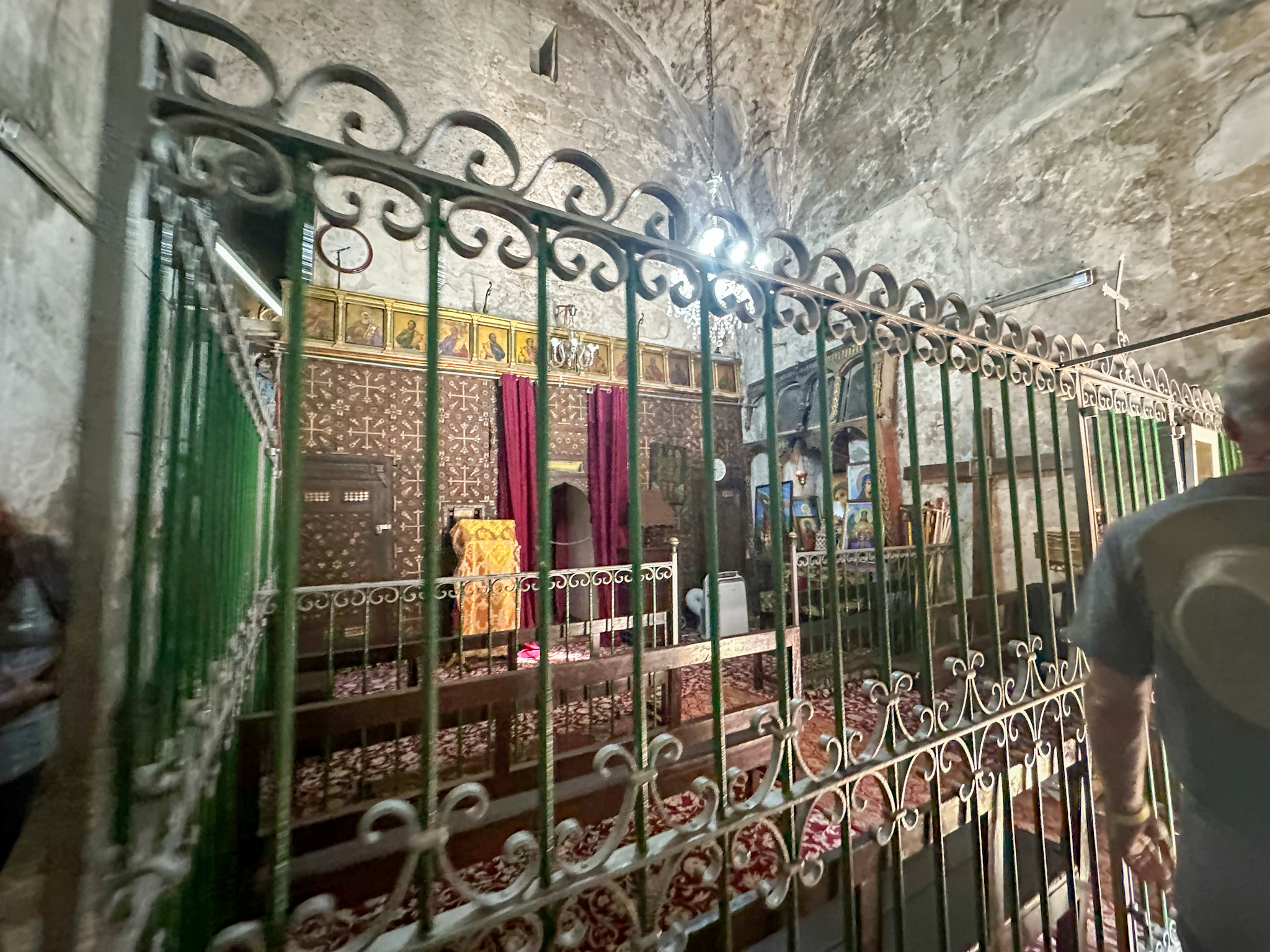
This tiny room is one church. We won’t try to name them all as it’s too confusing but they are literally sharing walls and floors and ceilings all crammed together around this holy site.


Making our way up to see the Rock of Golgotha which is the place where he supposedly died

Every explanation that you read or hear about this confusing groups of churches does not really make it easier to understand. There is much confusion and fighting at this conglomerate site of denominations.

Still in line, just taking it all in. Later in the week we will visit another nearby site that is also thought to be possibly the site of his death and burial and it will be a much more peaceful and natural setting.

Rock of Golgotha
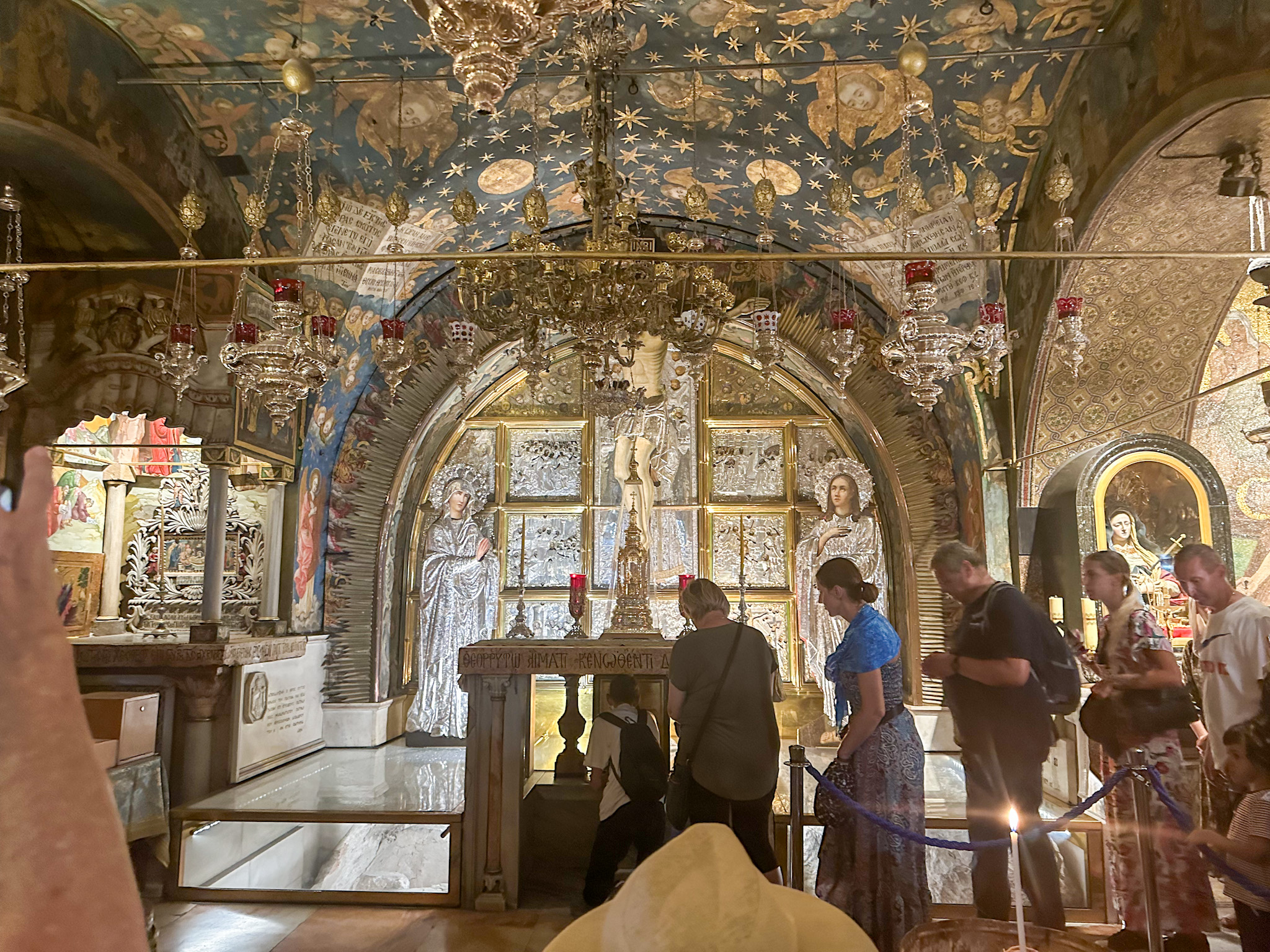
The rock of Golgotha is under that alter and people go through and touch the supposed area where the cross stood. Please note the weird baby faces in the paintings on the walls and ceilings. We took pictures because we were there and want to remember but it was hard to overcome the extreme extravagance and gaudiness and try to remember this is about Jesus. How this is honoring to Jesus in any way is beyond us.

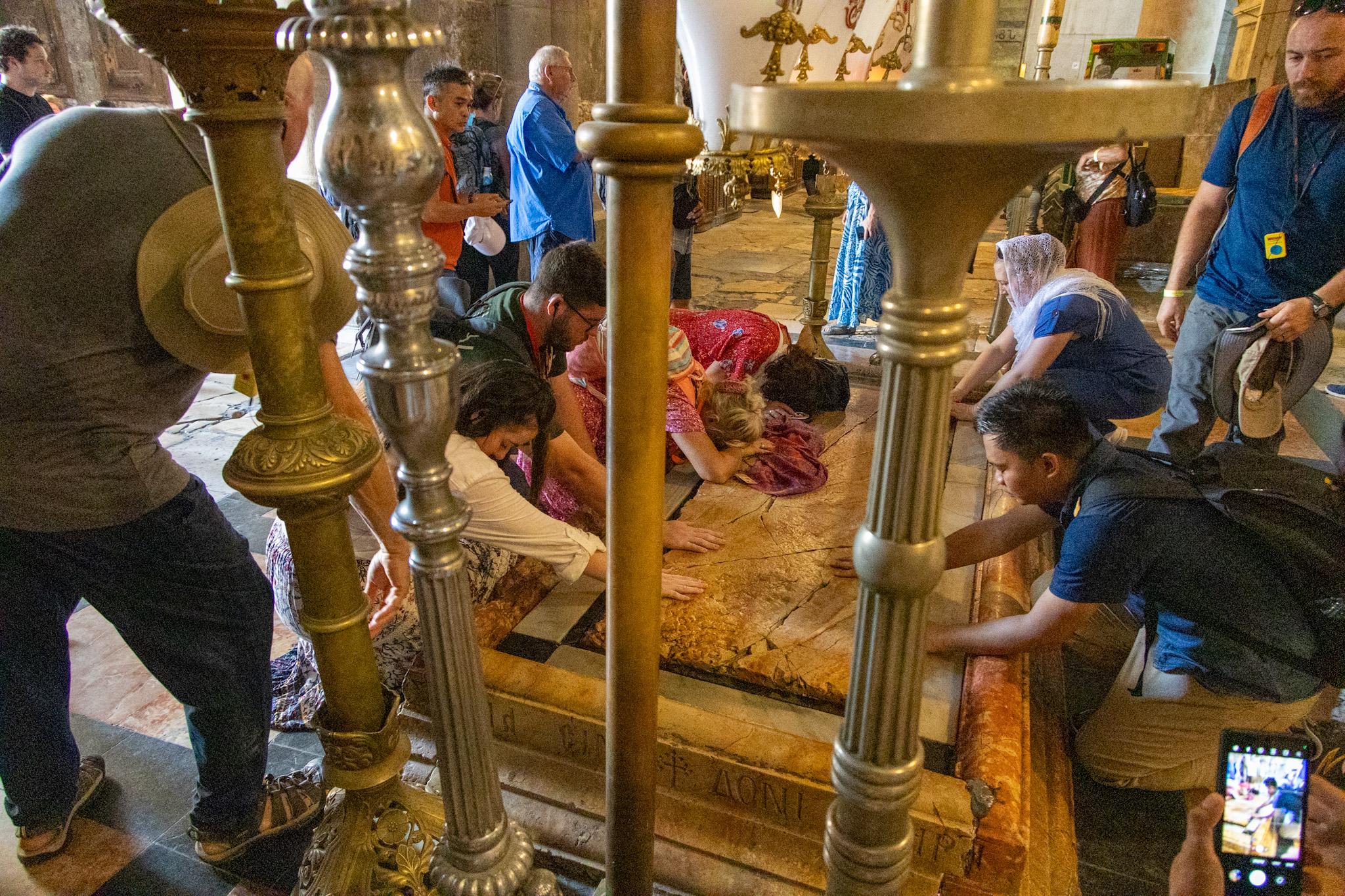
The “stone of anointing” where it is said Jesus was laid down in preparation for his burial.

Rotunda containing the “tomb of Jesus.” The small area to the left with paintings is the “Coptic Chapel” which contains a stone that is the back head of his tomb. Inside the “Edicule” to the right – the big stone square shrine – is said to be the site of his tomb but the stone in there is covered by marble. If you’re confused…yep, us too.

People waiting in line to see the tomb. We chose not to go in. There are no pics allowed and the dress code is the strictest of all sites we visited. Also, hey, HE is not there! He has risen!

This is an omphalos and considered in Judaism to be the foundation stone at the peak of the Temple Mount, the place from which the creation of the world began. In Christianity it represents the navel of the world – spiritual and cosmological center of the world. This is very close to the tomb of Jesus in the rotunda.

All the Stations of the Cross put together.

Leaving the Old City Jerusalem today through the Zion gate

